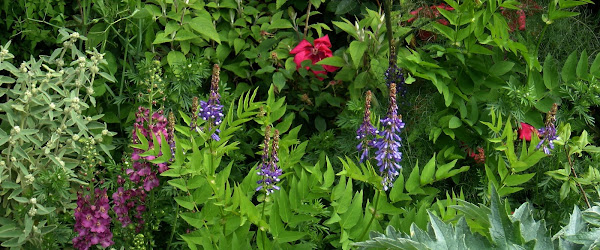I got into a spirited debate a few months ago with a visitor to the nursery about changes of scientific names. I know it’s something that infuriates many gardeners. I think the spark in this case was the recent changes to Abelia, but it could have been any number of other instances where well-established and time-honoured names had been changed, seemingly on a whim by a bunch of egg-heads who want nothing more than to change things for change’s sake, to justify their continued employment and perhaps to see their name in print.
With this particular visitor I could hardly get a word in edgeways, so incensed was she, so the exchange wasn’t very productive. All I could do was to try to assure her that there was another side to the argument. One of the problems is that the academics are used to talking to other scientists and even when they write in less learned publications, they are not always good at getting their ideas across to the layman. I was in the belly of the scientific beast for a few years so perhaps I’m in a better position to bridge the gap. Having said that it’s a good ten years since I was there so I’m not up to date with the latest findings.
Firstly I’m sure there must be some that simply don’t like change. Some people only feel comfortable with things being ‘the way they always have been’. What this actually means is that they want things to be the way they were when they were young, ignoring the fact that many of the names they take for granted were new names then. After all, I don’t think I’ve ever heard anyone talk about Funkia or Megasea, including the 96 year-old lady I work for. We have all accepted the new names (Hosta and Bergenia respectively.)
My first point then, which I think most of us would agree on is that at least some changes are inevitable and acceptable and that resisting all change on principal is just stubbornness. I assume most of us aren’t like that.
 |
| My photocopy of one of the early drafts of the angiosperm phylogeny, complete with my excited scribblings |
All this has become possible partly due to the fact that we can now ‘read’ DNA (and related molecules like RNA), and also to the recent massive increase in computing power. Molecular analysis has made it possible to get a grip on how things are actually related, not just on what look similar, and a scientific classification is all about relatedness – about evolution. (If you have a problem with evolution you won’t have much time for what I’m saying here.)
My second point then is that since the early nineties, when DNA analysis came of age, there has been a sort of renaissance in classification (taxonomy, systematics) not just of plants but of all organisms. A huge amount of new data based on evidence rather than personal (albeit learned) opinion has become available. It’s going to take a while to settle down, but if it seems like everything is changing at the moment, plant-names-wise, there’s a very good reason for that.
‘But what does all this have to do with gardening?’ I hear you cry. ‘Why should we have follow what the scientists say?’
No reason at all. As horticulturalists we would be perfectly within our rights to come up with our own system. To some extent we already do. We classify plants according to flower colour or edibility, season or size. We use common names when they are convenient (I can’t imagine ever talking about a Taxus hedge) and we have an elaborate system of cultivar names more Byzantine than anything the taxonomists have dreamed up. But I’d be reluctant, partly because I’m interested in the science and I like scientific names. Mainly we will carry on using the scientific system because coming up with a completely new one that is robust and consistent would be such an onerous task.
But in any case, I would carry on using the scientific system because I think it’s useful. It may sound strange but I use it all the time. Running a nursery full of plants that not many other people are growing means that I constantly have to make guesses about what kinds of conditions a plant might respond to. When I start working with a new plant I want to know two things – ‘Where does it come from?’ and ‘What is it related to?’ I know that the Primulaceae and Ranunculaceae don’t like their seeds drying out. I know that the Brassicaceae generally like alkaline soils where the Ericaceae do not. I can guess that Malus trilobatus can be grafted onto Crataegus but not onto Prunus. I know that any new members of the Euphorbiaceae and Solanaceae are likely to be poisonous but that the Malvaceae and Brassicaceae will probably be edible. I know that susceptibility to disease is often governed by relatedness – potato blight infecting tomatoes for example. And so on and so forth. There’s no point even trying to do this if we don’t really know what belongs where.
I know there are plenty of exceptions but I find that being able to make educated guesses from general knowledge about plants is more useful than not. And in any case, like I said, I just love that big picture – that all these plants (and all the other life forms too) are interrelated in time and space.




2 comments:
Thanks Steve - an excellent and well-rooted defense for the need for change in scientific names as science discovers how to dig deeper into how different types of plants are related.
Thanks - and I'm glad someone's reading this stuff
Post a Comment